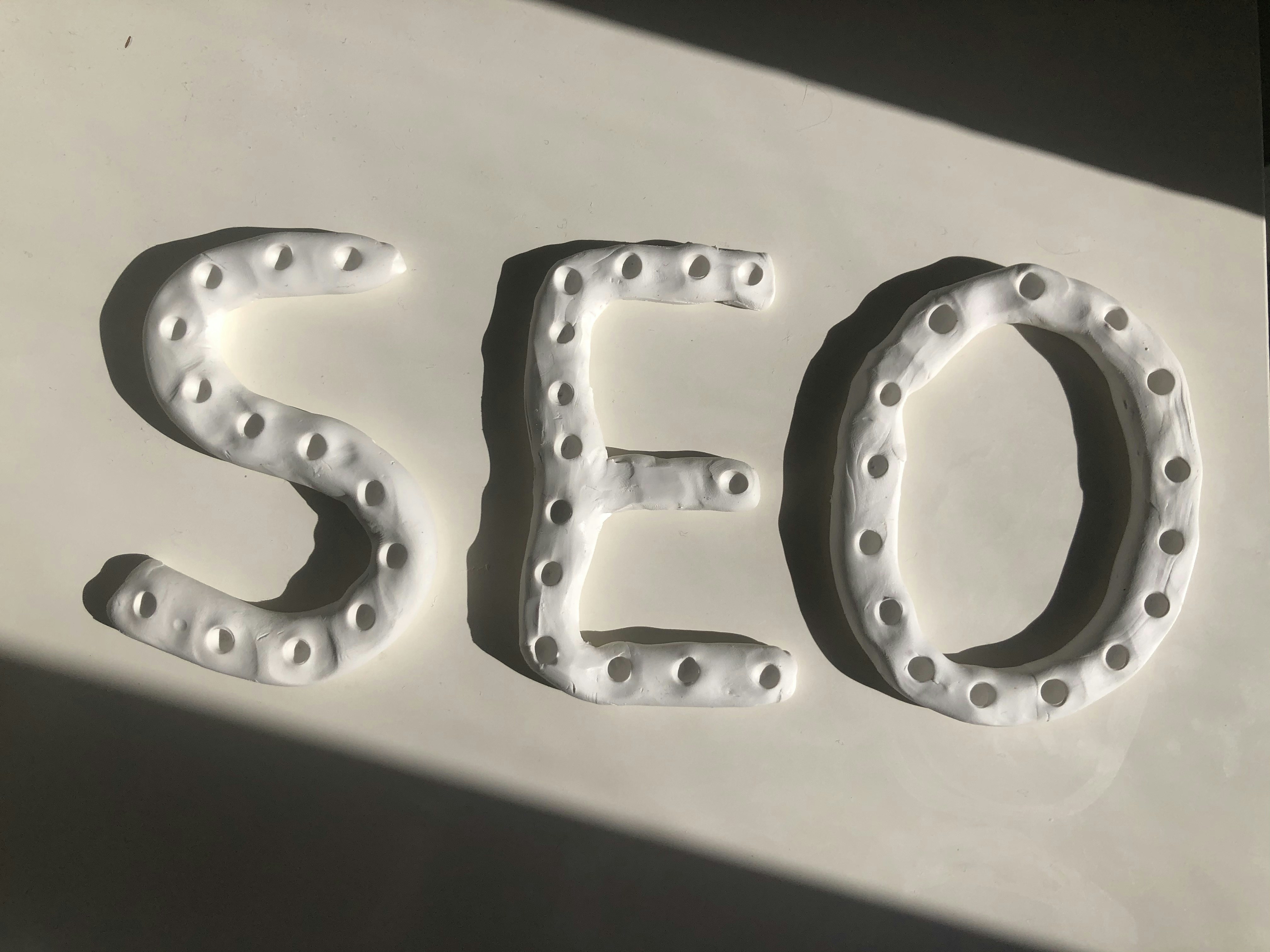The Ultimate Guide to Search Engine Marketing (SEM)
The Ultimate Guide to Search Engine Marketing (SEM)

In today's digital landscape, search engine marketing (SEM) has become crucial for businesses to reach their target audience. Understanding what search engine marketing is and how it works is essential for any company looking to succeed online. SEM ads are vital in driving traffic and conversions, making it a must-have strategy for any business with an online presence.
What is Search Engine Marketing?
Search engine marketing, often referred to as SEM, is a form of digital marketing that involves promoting websites by increasing their visibility in search engine results pages through paid advertising. This can include pay-per-click (PPC) ads on platforms like Google Ads and Bing Ads.
The Basics of SEM Ads
SEM ads are text-based advertisements that appear on search engine results pages when users enter specific keywords related to the advertiser's products or services. These ads are designed to attract clicks and drive traffic to the advertiser's website.
Why SEM is Essential for Your Business
SEM is essential for businesses because it allows them to reach potential customers at the exact moment they are searching for products or services related to their offerings. This targeted approach can lead to higher conversion rates and a strong return on investment.
Understanding Search Engine Marketing
Search engine marketing, commonly called SEM, is a digital marketing strategy that promotes websites by increasing their visibility in search engine results pages through paid advertising. SEM encompasses tactics to drive traffic and conversions, such as pay-per-click (PPC) ads and search engine optimization (SEO).
Definition of SEM
SEM, or search engine marketing, is gaining website traffic by purchasing ads on search engines. These ads appear at the top or bottom of search results pages when users enter relevant keywords related to the ad content. The primary goal of SEM is to attract potential customers and increase website visibility.
Key Components of SEM
Let's delve into the key components that make SEM a powerful tool.
1. Keyword Research & Targeting: The Foundation
- Think like your audience. The cornerstone of SEM is understanding what people search for. Conduct thorough keyword research to identify relevant terms related to your products, services, or industry. Tools like Google Keyword Planner can be helpful in this process.
- Prioritize, Strategize, Conquer. Don't just chase high-volume keywords. Consider a mix of high-traffic keywords (potentially more competitive) and less competitive keywords that still generate targeted traffic. Choose keywords that align with your business goals and resources.
- Keyword Integration is Key. Once you have your target keywords, strategically integrate them throughout your website content, meta descriptions, page titles, and even image alt tags. This signals to search engines the relevance of your content to specific searches.
2. SEO: The Organic Powerhouse
- Optimizing for Search Engines. Search Engine Optimization (SEO) is all about making your website more discoverable in organic search results.
- On-Page & Off-Page Optimization. SEO involves both on-page optimization (optimizing website content, such as headings and internal linking) and off-page optimization (building backlinks from high-authority websites). This creates a positive signal to search engines about your website's credibility and relevance.
3. Conversion Rate Optimization (CRO): Turning Visitors into Customers
- Beyond Traffic, Aim for Conversions. Having a high volume of website traffic is great, but what truly matters is converting those visitors into paying customers or leads.
- Optimizing for Action. Conversion Rate Optimization (CRO) focuses on optimizing your website to encourage visitors to take a desired action, such as making a purchase, signing up for a newsletter, or contacting you. This involves clear calls to action, a user-friendly website design, and compelling content.
4. Analytics & Tracking: Measuring Success
- Data is King. You can't improve what you don't measure. SEM requires tracking the performance of your campaigns through tools like Google Analytics.
- Metrics that Matter. Monitor key metrics like website traffic, keyword rankings, conversion rates, and ad performance. Analyzing this data helps you identify areas for improvement and refine your SEM strategy over time.
Benefits of SEM for Businesses
SEM offers several benefits for businesses looking to increase their online presence and reach their target audience. It provides immediate visibility in search results, allowing enterprises to connect with potential customers quickly. Additionally, SEM allows for precise targeting based on location, demographics, and device type.
SEM Ads Strategies

Effective Keyword Research
Effective keyword research is crucial for targeting the right audience when it comes to search engine marketing. Using tools like Google Keyword Planner or SEMrush, businesses can identify relevant keywords with high search volume and low competition. This allows them to optimize their SEM ads for maximum visibility and clicks, ultimately driving more traffic to their website.
Creating Compelling Ad Copies
Crafting compelling ad copy is essential in capturing the attention of potential customers. Businesses should focus on creating engaging and relevant ad content that resonates with their target audience. By highlighting unique selling points and offering a clear call to action, businesses can increase the likelihood of clicks and conversions from their SEM ads.
Maximizing Ad Performance with Bid Management
Bid management is crucial in maximizing ad performance in search engine marketing. Businesses must constantly monitor and adjust their bids to ensure they get the most out of their advertising budget. By strategically adjusting bids based on keyword performance and competition, businesses can optimize their ad placements and achieve better results.
SEM vs. SEO

Key Differences Between SEM and SEO
Search engine marketing (SEM) and optimization (SEO) are crucial for boosting your online presence, but they have distinct differences. While SEM involves paid advertisements at the top of search engine results pages, SEO focuses on optimizing your website to rank organically. SEM ads are marked as Ads and appear above or below organic search results, while SEO efforts aim to improve your website's visibility in unpaid search results.
When to Use SEM vs. SEO
Knowing when to use SEM versus SEO depends on your business goals and budget. If you want immediate visibility and are willing to invest in paid ads, then SEM is the way to go. On the other hand, if you're looking for long-term sustainable results and have the time to invest in optimizing your website, then SEO is the better choice. It's also important to consider the competitiveness of keywords in your industry when deciding between the two.
Leveraging Both for Maximum Results
To maximize your online presence, it's beneficial to leverage both SEM and SEO strategies simultaneously. While SEM can provide immediate visibility and traffic, it can be costly in the long run. On the other hand, investing in SEO can help build a strong foundation for sustainable organic traffic over time. By combining both strategies, you can achieve maximum visibility and drive quality traffic to your website.
Advanced SEM Tactics

Remarketing for Increased Conversions
Remarketing is a powerful strategy for search engine marketing that allows you to target users who have previously visited your website but didn't convert. By showing them tailored ads as they browse other sites, you can increase brand recall and encourage them to return and purchase. This tactic can significantly boost your conversion rates and maximize the ROI of your SEM campaigns.
Ad Extensions for Enhanced Visibility
In search engine marketing, ad extensions are additional pieces of information that expand your ads with extra details like location, call buttons, links to specific pages on your site, and more. Effectively using ad extensions can make your ads more prominent and appealing to potential customers, ultimately increasing click-through rates and driving more qualified traffic to your website.
A/B Testing for Optimal Ad Performance
A crucial aspect of search engine marketing strategies is A/B testing, where you create two versions of an ad with different elements, such as headlines, images, or calls to action. By running these variations simultaneously and comparing their performance metrics, you can identify which version resonates best with your audience and refine your ad content for maximum impact.
Measuring SEM Success

Strikingly Analytics Dashboard
When it comes to measuring the success of your search engine marketing (SEM) efforts, there are several key metrics that you should track. These include click-through rate (CTR), conversion rate, cost per click (CPC), and return on investment (ROI). By closely monitoring these metrics, you can gain valuable insights into the performance of your SEM campaigns and make informed decisions to optimize your strategy for better results.
Key Metrics to Track in SEM
Click-through rate (CTR) is a crucial metric that measures the percentage of people who click on your ad after seeing it. After clicking on your ad, the conversion rate indicates the percentage of users who completed a desired action, such as making a purchase or signing up for a newsletter. Cost per click (CPC) measures how much you pay each time someone clicks on your ad. Return on investment (ROI) helps you understand the profitability of your SEM campaigns by comparing the revenue generated from advertisements to the cost of running those ads.
Interpreting Data for Improved Campaigns
Once you have collected data on these key metrics, it's essential to interpret and analyze them to gain actionable insights. Look for patterns and trends in the data to understand what's working well and needs improvement. For example, if you notice that specific keywords have a high CTR but low conversion rates, it may indicate that they attract irrelevant traffic.
Adjusting Strategies Based on Performance
Based on your data analysis, make necessary adjustments to your SEM strategies for improved performance. This could involve refining keyword targeting, optimizing ad copies, adjusting bid management strategies, or reallocating the budget towards high-performing ads or keywords. Continuously testing and tweaking different elements of your SEM campaigns based on performance data is crucial for long-term success.
Search Engine Marketing (SEM) with Strikingly: Dominate Search Results and Drive Traffic

Strikingly Landing Page
Strikingly offers a range of features that can help businesses boost their online visibility and drive more website traffic. One key feature is its built-in SEO tools, which allow users to optimize their website content for search engines. This includes keyword optimization, meta tag management, and sitemap generation.
Search engines are the gateway to the online world. If you want potential customers to find your business, ranking high in search engine results is crucial. This guide explores Search Engine Marketing (SEM) with Strikingly, empowering you to dominate search results and drive targeted traffic to your website.
SEM encompasses various strategies to increase website visibility on search engine results pages (SERPs). It involves both organic search engine optimization (SEO) and paid search advertising.
Strikingly and SEO: Optimizing Your Foundation
Even without paid advertising, Strikingly equips you with the tools to optimize your website for organic search.
- Keyword Research. Identify relevant keywords that potential customers might use to find your business. Strikingly integrates with popular SEO tools to guide your keyword research.
- Content is King. Create high-quality, informative content optimized for your target keywords. Strikingly's user-friendly blog platform simplifies content creation.
- On-Page Optimization. Strikingly's intuitive editing tools allow you to optimize page titles, meta descriptions, and image alt tags with relevant keywords.
- Mobile-Friendly Design. Strikingly ensures your website is responsive and mobile-friendly, a crucial ranking factor for search engines.

Strikingly Mobile Responsive Website
Beyond the Basics: Optimizing Your SEM Strategy
- Leverage Strikingly Analytics. Strikingly's built-in analytics provide valuable insights into website traffic sources and user behavior. Use this data to refine your SEO and ad targeting strategies for maximum impact.
- Content Marketing. Publish high-quality blog posts and share them on social media to establish yourself as an authority in your industry. This attracts organic traffic and boosts your overall online presence.
- Backlinks. Encourage other websites to link back to your Strikingly website. Backlinks are a powerful SEO signal indicating your website's credibility and value.
Strikingly: Your SEM Partner for Success
Strikingly equips you with the tools and resources to excel in SEM, whether you're a seasoned marketer or just starting out. Build a search-engine-optimized website, launch targeted ads, gain valuable insights, and watch your website traffic soar.
Embrace the power of Strikingly SEM and unlock the potential of search engines to drive targeted traffic, generate leads, and propel your business forward!
Built-in SEO Tools
Strikingly's built-in SEO tools provide users with the necessary resources to ensure their website ranks high on search engine results pages. By optimizing their website content with relevant keywords and meta tags, businesses can increase their chances of being found by potential customers searching for products or services related to their industry.
Customizable Landing Pages

Macro Template from Strikingly
Another valuable feature Strikingly offers is its customizable landing pages. With this feature, businesses can create unique and engaging landing pages tailored to specific SEM ad campaigns. These landing pages can be optimized for conversion and designed to capture visitors' attention, ultimately leading to increased sales and revenue.
Integration with Google Ads
Strikingly also offers seamless integration with Google Ads, allowing businesses to easily manage their SEM ads campaigns directly from the platform. This integration streamlines the creation and monitoring of ad campaigns, making it easier for businesses to track performance and make necessary adjustments for optimal results.
Businesses can effectively implement search engine marketing strategies that drive traffic, generate leads, and increase website conversions by leveraging these features related to SEM on Strikingly's platform. Strikingly provides the essential resources needed for a successful SEM campaign with built-in SEO tools, customizable landing pages, and seamless integration with Google Ads.
Craft the Perfect SEM Strategy
Search engine marketing (SEM) is essential for businesses looking to increase their online visibility and reach their target audience. Crafting the perfect SEM strategy involves understanding the key components of SEM ads, including effective keyword research, compelling ad copies, and bid management. By leveraging both SEM and SEO, businesses can maximize their results and achieve optimal online success.
Crafting the perfect SEM strategy involves understanding your target audience and their search behaviors. By conducting thorough keyword research and creating compelling ad copies that resonate with your audience, you can ensure that your ads reach the right people at the right time. Maximizing ad performance through bid management is crucial for achieving a successful SEM strategy.
SEM Best Practices for Business Growth
SEM best practices for business growth include staying updated with the latest trends and changes in search engine algorithms. It's essential to continuously monitor your ad performance, track key metrics, and interpret data to make informed decisions about adjusting your strategies for improved campaign results.
The Future of Search Engine Marketing
The future of search engine marketing is bright as businesses continue to recognize its importance in reaching potential customers online. With advancements in technology and data analytics, we can expect more sophisticated SEM strategies that deliver even better results for businesses looking to grow their online presence.
